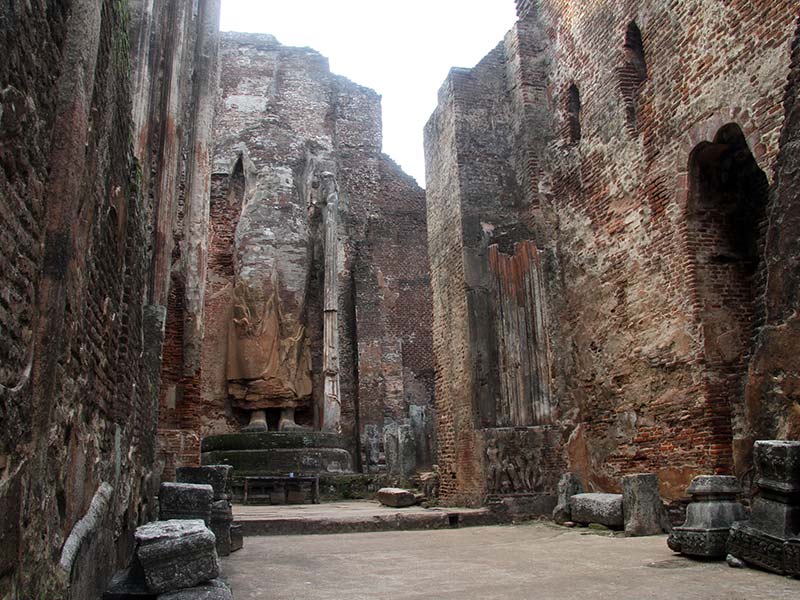Another of the monuments marking out the limits of the Alahana Pirivena complex hinterland, the Lankathilaka Image House (loosely translating as the “Beauty of Lanka”) is now in ruin, but even these are most spectacular, showing us a glimpse of the royal vision of Parakramabahu of Polonnaruwa in creating a new Sri Lanka from the ashes of the heavily divided, war-torn country that he came to rule. The outer walls of this shrine are incredibly thick stone and brick structures. They are wonderfully carved with eye-popping details of palaces and gods on the lowermost corners close to the ground and in other areas. Each of these impressive carvings is carefully incised into the smooth stone. Each detail is perfectly three-dimensional due to the light and shadow that plays on them.
The whole structure-at the back at least-is a built in the form of a rectangle. In fact, in terms of the building’s floor plan, it is highly geometric and sharp-edged in form.
All that is left behind is the lowermost floor of the building. But even it is an artistic and architectural marvel. Seventeen free-standing columns supported the upper story of the construction. Above that was a large roof, probably with wooden beams and tiling.
In fact, as per the Chulavamsa-continuation of the Mahavamsa-the Lankathilaka Image House had five stories in total. A proper exhibition hall for the greatest artworks of the day. Therefore one can actually reconstruct the building with a certain degree of confidence. Just like most of the other structures in the Polonnaruwa hinterland.
The other images and carvings to be seen dancing across the walls of this great building are those of gods, kings, Brahmans, and a number of items and sceneries from Indo-Lankan mythology.
The first thing one sees when entering Lankathilaka Image House is not the intricately designed guardian stones or makara balustrades or even the wide stairs and pavilions. But instead, it is the forty-one-foot Buddha image standing against a screen wall. However, this stone statue lacks a head and hands and it is not in excellent condition. Relatively good though it is with the details having blurred somewhat.
The screen wall he backs is a flat object or might have been back when it was in its prime during the Medieval era.
Written by Vasika Udurawane for Travel Lanka Compass



0 Comment